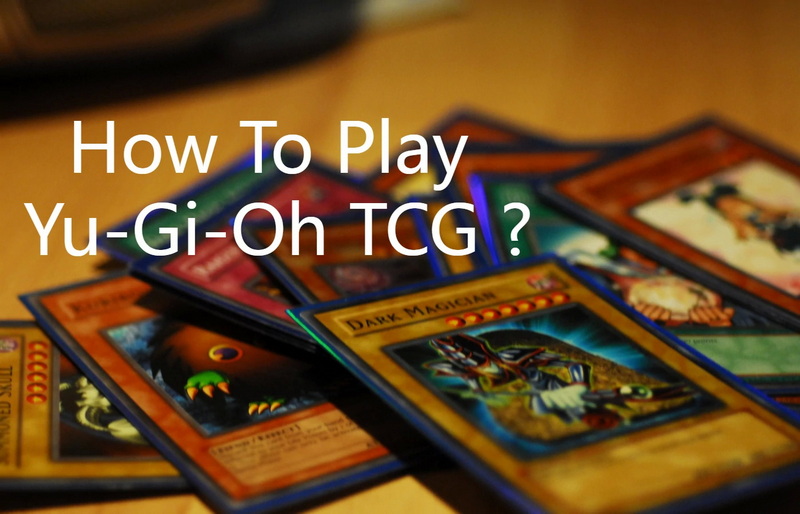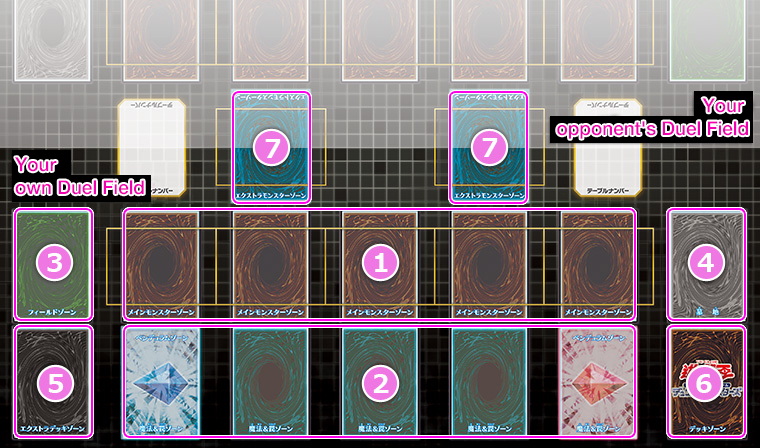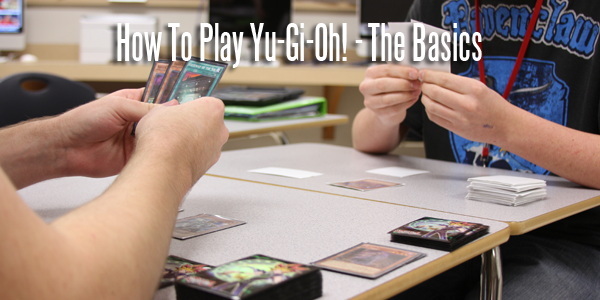Content Menu
● Understanding the Basics
● Card Types
● Building Your Deck
● The Game Setup
● Turn Structure
● Summoning Monsters
● Combat Mechanics
● Winning the Game
● Strategies for Beginners
● Advanced Strategies
>> Control Strategies
>> Stun Strategies
>> Exodia Strategy
>> Milling Strategy
>> Toolbox Strategy
● Conclusion
● Frequently Asked Questions
>> 1. What is the minimum number of cards required in a Yu-Gi-Oh! deck?
>> 2. Can I use more than three copies of a single card in my deck?
>> 3. How do I win a duel in Yu-Gi-Oh!?
>> 4. What are Extra Deck monsters?
>> 5. Is there an official rulebook for Yu-Gi-Oh!?
● Citations:
Yu-Gi-Oh! is a popular trading card game (TCG) that combines strategy, skill, and a bit of luck. Players duel each other using decks of cards that consist of monsters, spells, and traps to reduce their opponent's Life Points (LP) to zero. This article will provide an in-depth guide on how to play Yu-Gi-Oh!, covering the basics of gameplay, card types, turn structure, deck building, strategies for beginners, and advanced techniques for seasoned players.

Understanding the Basics
At its core, Yu-Gi-Oh! is about summoning monsters to battle your opponent while using spells and traps to support your strategy or hinder your opponent's moves. Each player starts with 8000 LP and aims to deplete their opponent's LP through various means.
Card Types
In Yu-Gi-Oh!, there are three main types of cards:
- Monster Cards: These are the primary means of attacking your opponent. They have Attack (ATK) and Defense (DEF) points. Monsters can be Normal Monsters (no special effects) or Effect Monsters (with unique abilities).
- Spell Cards: These cards provide various effects that can assist you during your turn. They can be played immediately after being drawn and include Normal Spells, Quick-Play Spells, Continuous Spells, and Field Spells.
- Trap Cards: These cards are typically set face-down on the field and activated during your opponent's turn or in response to certain actions. They include Normal Traps, Continuous Traps, and Counter Traps.
Building Your Deck
To start playing Yu-Gi-Oh!, you need a deck consisting of:
- Main Deck: This must have between 40 to 60 cards. A well-balanced deck typically contains a mix of monster, spell, and trap cards.
- Extra Deck: This can contain up to 15 cards featuring special summonable monsters like Synchro, Xyz, and Fusion monsters.
- Side Deck: This is optional but can include up to 15 cards that you may swap in between duels during a match.
The Game Setup
Before starting a duel:
1. Shuffle Your Deck: Both players shuffle their decks thoroughly.
2. Decide Who Goes First: Players can flip a coin or play rock-paper-scissors to determine who goes first.
3. Draw Opening Hands: Each player draws five cards from their deck.
4. Set Up the Field: Players arrange their play area with zones for Monster Cards, Spell & Trap Cards, Extra Decks, and Graveyards.
Turn Structure
A turn in Yu-Gi-Oh! consists of several phases:
1. Draw Phase: The active player draws one card from their deck (except for the first player on their first turn).
2. Standby Phase: Some card effects may activate during this phase.
3. Main Phase 1: Players can summon monsters, set spell or trap cards, change monster positions, or activate card effects.
4. Battle Phase: If the player chooses to attack, they declare which monster will attack and target an opponent's monster or directly attack their LP if no monsters are present.
5. Main Phase 2: Similar actions as Main Phase 1 can be performed here.
6. End Phase: The turn ends here; any effects that activate at this time will resolve.
Summoning Monsters
There are different ways to summon monsters:
- Normal Summon: Each player can perform one normal summon per turn by placing a monster in either face-up attack position or face-down defense position.
- Special Summon: This includes various methods like Synchro Summoning or Fusion Summoning that allow players to bring monsters onto the field without counting against the normal summon limit.
Combat Mechanics
When attacking with a monster:
- Compare the attacking monster's ATK with the defending monster's ATK/DEF.
- If the attacking monster has higher ATK than the defending monster's DEF, the defending monster is destroyed and sent to the Graveyard; if not, the attacking monster may be destroyed instead.

Winning the Game
Players can win by:
- Reducing their opponent's LP to zero.
- Forcing their opponent to be unable to draw a card when required.
- Meeting specific conditions outlined on certain cards (e.g., assembling all pieces of Exodia).
Strategies for Beginners
To excel in Yu-Gi-Oh!, consider these beginner strategies:
- Start with a balanced deck focusing on synergy between cards.
- Familiarize yourself with card effects and how they interact with one another.
- Practice against friends or through online simulators before entering competitive play.
- Keep track of your LP and maintain awareness of both players' potential plays.
Advanced Strategies
As players become more experienced, they may want to explore advanced strategies that can give them an edge in competitive play:
Control Strategies
Control strategies focus on manipulating the game state by limiting what your opponent can do. This can involve removing their key monsters from play or taking control of their cards for your own use. For instance:
- Vampire Archetype: This archetype excels at taking control of opponents' monsters when they are defeated in battle. Cards like *Vampire Fraulein* allow players to Special Summon defeated monsters back onto their side of the field.
Stun Strategies
Stun strategies aim to prevent opponents from executing their plans by disrupting their ability to summon monsters or activate effects effectively. A notable example is using Fairy-Type monsters like *Archlord Kristya*, which prevents either player from Special Summoning while on the field.
Exodia Strategy
The Exodia strategy is unique as it focuses on winning instantly by collecting all five pieces of Exodia in your hand. This often involves drawing as many cards as possible each turn using effects from cards like *Destiny HERO – Diamond Dude* which allows players to manipulate draws effectively.
Milling Strategy
Milling involves forcing your opponent to deplete their deck before you lose all your LP. Cards like *Morphing Jar* can help achieve this by making opponents draw multiple cards at once until they run out of options.
Toolbox Strategy
A toolbox strategy deck is highly versatile and does not adhere strictly to one theme but utilizes various powerful cards from different archetypes. This requires extensive knowledge of many cards and how they interact with one another effectively during duels.
Conclusion
Yu-Gi-Oh! is an engaging and strategic trading card game that offers endless possibilities for creativity and competition. By understanding the rules, mastering card interactions, and developing effective strategies—both basic and advanced—players can enjoy countless hours of fun dueling with friends or at tournaments. As you delve deeper into the game, you'll discover more complex strategies and nuances that make Yu-Gi-Oh! a beloved pastime for many around the world.

Frequently Asked Questions
1. What is the minimum number of cards required in a Yu-Gi-Oh! deck?
A minimum of 40 cards is required in your Main Deck.
2. Can I use more than three copies of a single card in my deck?
No, you are limited to three copies of any single card in your Main Deck unless specified otherwise by specific card restrictions.
3. How do I win a duel in Yu-Gi-Oh!?
You win by reducing your opponent's Life Points to zero, forcing them to draw when they have no cards left in their deck, or fulfilling specific win conditions outlined on certain cards like Exodia.
4. What are Extra Deck monsters?
Extra Deck monsters include Synchro Monsters, Xyz Monsters, and Fusion Monsters that require specific summoning methods different from regular Monster Cards.
5. Is there an official rulebook for Yu-Gi-Oh!?
Yes, there is an official rulebook available online that provides comprehensive rules and guidelines for playing Yu-Gi-Oh!.
Citations:
[1] https://www.cbr.com/yugioh-duelist-strategies/
[2] https://www.youtube.com/watch?v=q0q90zCd6gE
[3] https://www.reddit.com/r/yugioh/comments/6fok44/an_explanation_of_duelist_kingdom_rules/
[4] https://www.dicebreaker.com/games/yu-gi-oh-tcg/how-to/how-to-play-yu-gi-oh-tcg
[5] https://hobbylark.com/card-games/How-to-Build-a-Competitive-Yugioh-Deck-Part-2
[6] https://www.cbr.com/u-gi-oh-go-rush-card-game-mechanics/
[7] https://www.youtube.com/watch?v=bGZOiTcHLzM
[8] https://gamefaqs.gamespot.com/boards/942402-yu-gi-oh-gx-the-beginning-of-destiny/47923655
[9] https://infinite.tcgplayer.com/article/The-Coolest-Mechanics-in-Yu-Gi-Oh-History/095bbbf9-4732-492d-8e70-20344e8e1138/
[10] https://www.yugioh-card.com/eu/forbeginners/
[11] https://www.youtube.com/watch?v=yw7VObr9aR0
[12] https://gamerant.com/yugioh-beginner-tips-tcg/
[13] https://hobbylark.com/card-games/How-to-Build-a-Competitive-Yugioh-Deck
[14] https://infinite.tcgplayer.com/article/Build-Better-Yu-Gi-Oh-Decks-by-Breaking-the-Rules-of-Deckbuilding/f48c7c15-5c38-43ad-b7c2-6156a34cddc8/
[15] https://www.reddit.com/r/yugioh/comments/o421u0/a_beginners_guide_to_competitive_yugioh_part_1/
[16] https://www.youtube.com/watch?v=-diy8ok6zLY
































